BELIZE
Belize may be tiny, but it can claim plenty of superlatives, from the longest barrier reef in the Western Hemisphere to what are some of the most important Maya sites in the world.
Main Attractions
Belize City
The cayes
Altun Ha
Lamanai
Corozal
San Ignacio
Caracol
Dangriga
Placencia
Nature reigns supreme in Belize, from tangled rainforests crisscrossed with ancient caves, roaring rivers, and crystal pools, to the lively sunwarmed cayes, where you can sip rum cocktails with your toes planted in the sand. Spend a day or two in Belize and it’s easy to see why this is a country that welcomes many repeat visitors: one taste is rarely enough.
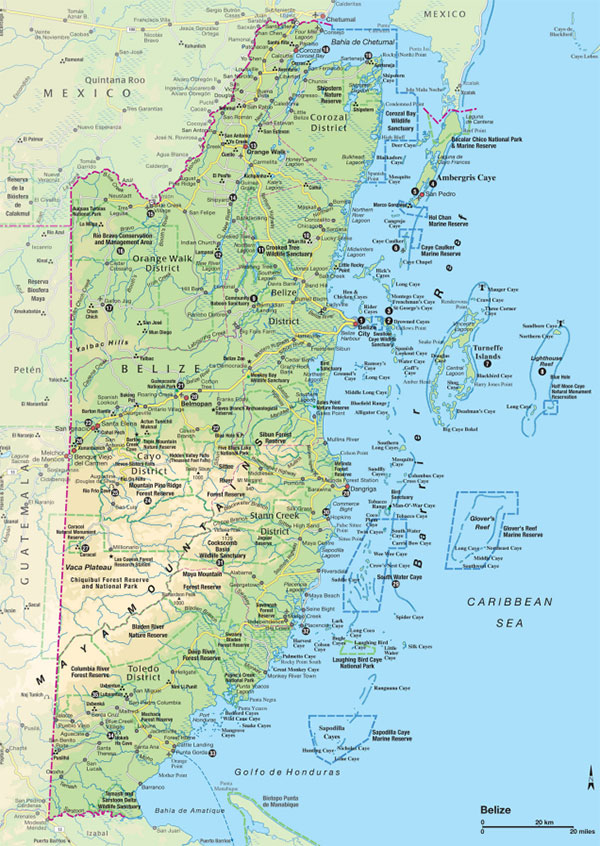
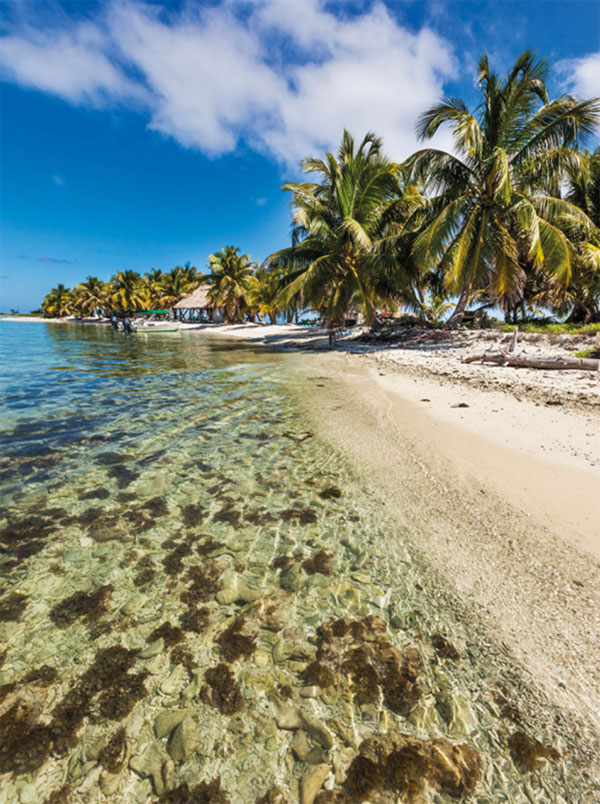
Beach at Laughing Bird Caye National Park.
Getty Images
Belize City is the cacophonous hub – the whole nation under one roof, distilled down into this bustling, ramshackle port town by the Caribbean Sea. North of the city, riverside communities left slumbering since the end of the logging industry in the 1960s are waking up and breathing new life into Belize’s environmental treasure chest. Here, you’ll spy more wildlife in one day than in most other parts of the world in a year. Maya cities like Lamanai are being further unearthed, their mysteries studied by teams of archeologists from around the globe.
Heading west into the hills around San Ignacio, a welcome drop in temperature is accompanied by a booming network of jungle lodges. Pump up the adrenalin by tubing down wild rivers, followed by horseback rides up to mountain summits for sweeping views of the canopy. Capped by the Mountain Pine Ridge, home of the great Maya city of Caracol, the region has become Belize’s main ecotourism hub. Toward the south, Placencia is blessed with the country’s finest beaches, but even with the tourist influx, the locals retain a defiantly laid-back lifestyle. Head into the interior of the far south to explore Belize’s only true tropical rainforest, where Maya villages coexist with nature in a way that has not changed in thousands of years.
Finally, the undisputed highlight for most visitors to Belize: the cayes (pronounced keys), a necklace of islands strung the length of the coral reef. Unforgettable islands, the cayes range from upbeat tourist spots to stranded desert isles offering the best diving, snorkeling, and fishing.
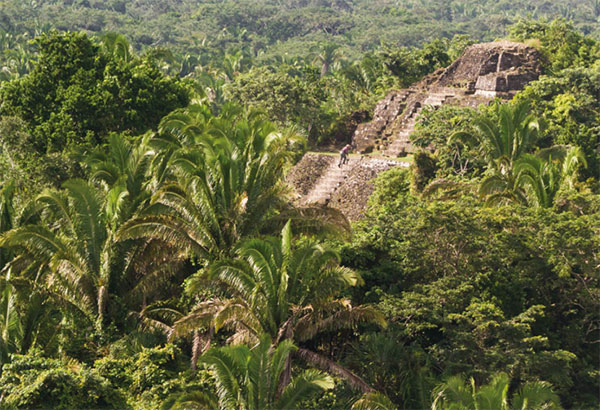
Lamanai ruins.
Shutterstock
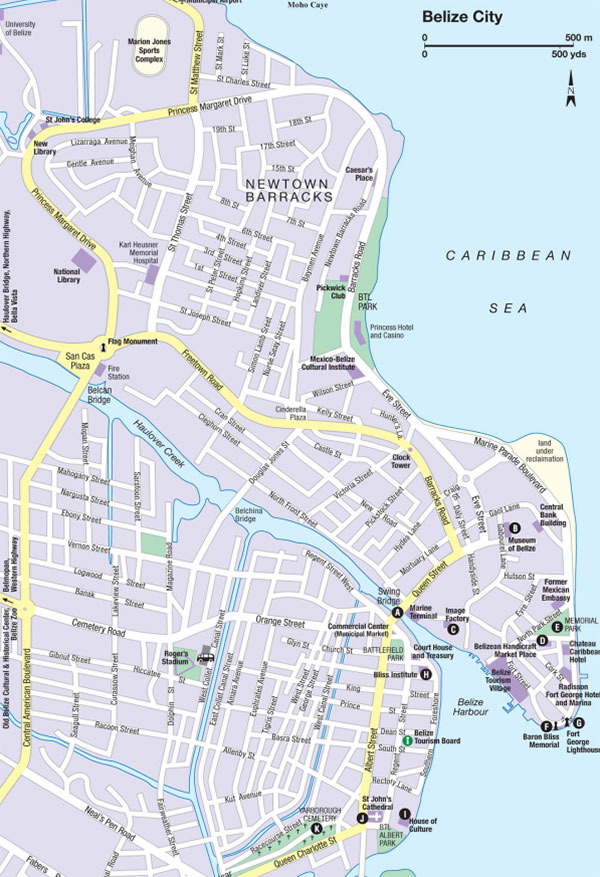
Belize City
The rough and tumble exterior of Belize City 1 [map] belies its treasures, which include the country’s top museums, beautifully restored historical buildings, and a premier performing arts center.
Most travelers see just one small, rather dismal corner of Belize City: the airport. They fly in to Belize, and promptly fly back out – to the cayes or elsewhere in the country. But, if you’re here to experience all sides of the country, then it’s worth lingering for a day or two. In addition to the city’s lively streets, this is the cultural heart of the country, with several excellent museums covering archeology and the country’s history.
Downtown Belize City
The city center’s busiest hub – and best-known landmark – is the Swing Bridge A [map] , one of three bridges connecting the city’s south and north sides. Constructed in 1922 for what was then primarily pedestrian traffic, the bridge has the distinction of being the only manually operated swing bridge still in existence in the Americas. Using long poles inserted into a capstan, four men lever the bridge to face the harbor mouth so that boats can sail through. The bridge now operates generally only when large boats are passing through or during special events. Whether it’s in use or not, it’s worth stopping by for picturesque views of Belize City and the colorful fishing boats bobbing on Haulover Creek.
The star cultural sight of Belize City is the excellent Museum of Belize B [map] (Gabourel Lane, www.travelbelize.org/attraction/museum-belize/ ; daily 9am–4pm), housed in the former prison, which was in use until the early 1990s. The superbly curated museum showcases a variety of exhibits that explore the history of Belize City and stunning ceramics and jade jewelry from Belize’s Maya culture, including a replica of the famous jade head from Altun Ha.
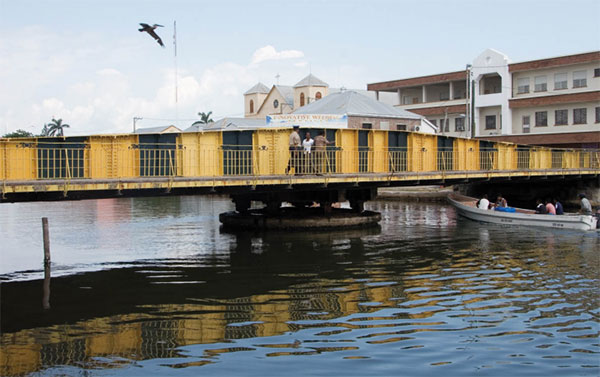
Swing Bridge, Belize City.
Corrie Wingate/Apa Publications
The northside
The northside unfolds north of the Swing Bridge, and is dotted with the city’s top hotels, the breezy Memorial Park and Belize City’s cruise ship port.
Near the Swing Bridge is the Marine Terminal, where boats depart regularly for Caye Caulker and San Pedro. The surrounding stands sell T-shirts, hats, beach towels, and other souvenirs. Just up the street from the Marine Terminal, heading away from the Swing Bridge is the Image Factory C [map] (10 North Front Street; tel: 223 4093; Mon–Fri 9am–6pm). This is one of Belize’s first comprehensive art galleries, and it features local artists and visiting talents, as well as educational exhibits on natural and cultural history.
On the waterfront is the Belize Tourism Village, a large shopping mall and entertainment complex that caters to the vast number of cruise ship visitors. A few blocks over, near Memorial Park, is the Belizean Handicraft Market Place D [map] (Memorial Park; hours vary, generally Mon–Sat 9am–5pm), which is filled with Belizean hardwood crafts, such as bowls and picture frames, along with Maya basketry and hot sauces and spices.
Memorial Park and Marine Parade
In 1924, an American construction company reclaimed the land and built some lovely homes – many of which still stand – on Cork Street and facing Memorial Park E [map] , which commemorates the Battle of St George’s Caye in 1798 and Belizean servicemen who served in World Wars I and II. The park is used for open-air concerts and is a favorite gathering spot during the September Celebrations. The Marine Parade, which runs along the waterfront edge of Memorial Park, has been renovated over the last decade and is now a breezy boulevard and pedestrian promenade.
With several guesthouses and one of the city’s largest hotels, Radisson Fort George Hotel and Marina, the tip of the northside – known as the Fort – may have more tourist accommodations than anywhere else in town. Locals also enjoy the view from the Fort, particularly on Sunday afternoons when families and lovers take a walk out to the lighthouse, past the Baron Bliss Memorial F [map] . The Baron, a wealthy British invalid who fished Belizean waters for several weeks and then died aboard his yacht in 1927, left the bulk of his estate to the Belizean people in gratitude for their hospitality during his final days.
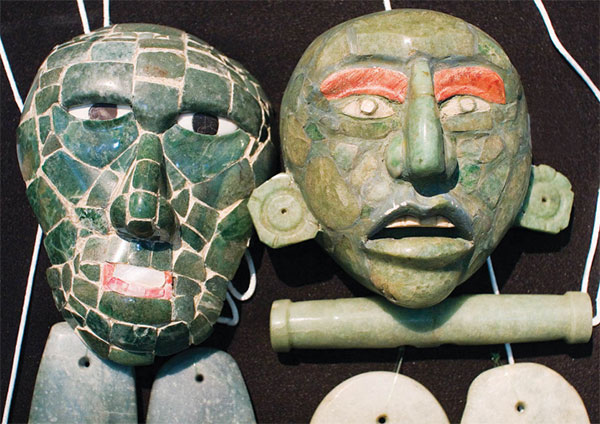
Jade mosaic mask originating from Corozal in 150-300 AD, at the Museum of Belize.
Corrie Wingate/Apa Publications
The Fort George Lighthouse G [map] is one of the last things visitors see when leaving the city by water taxi and it is still a welcome site to boaters when they approach the mouth of the Haulover Creek.
Bliss Centre and House of Culture
Facing the sea near the Court House rises the Bliss Institute H [map] . Built with funds from the Baron Bliss trust, the modernized building houses the Bliss Centre for the Performing Arts (Southern Foreshore, tel: 227 2110, visitor center Mon–Fri 8am–5pm, performances usually 6–9pm), a state-of-the-art venue, with a 600-seat theater that features local shows, dance, and music.
The House of Culture I [map] (Regent Street, tel: 277 3050, daily 9am–4pm), formerly the Government House, completed in 1812, rises over the end of Regent Street. This spacious colonial mansion was home to British governors appointed to Belize. The House of Culture offers art and music classes, and hosts exhibitions, concerts, plays, and even fashion shows.
St John’s Cathedral
The oldest Anglican church in Central America, St John’s Cathedral J [map] (southern end of Albert Street, daily 6am–6pm) looms just across the street from the House of Culture. Built by slaves using bricks brought to Belize as ship’s ballast, the building was completed in 1820 and became the coronation site of four Mosquito Kings, whose people (Native Americans who once inhabited the Mosquito Coast, in what is now Nicaragua) maintained good relations with the British government in Belize, even though they eventually came under Spanish rule.
Lying opposite the cathedral is Yarborough Cemetery K [map] , named for the land’s owner, the magistrate James Yarborough. It was used from 1781 to 1882, first as a burial ground for the colony’s more prominent citizens and later opened to the masses.
Nearby is Regent Street, which is lined with the city’s best-preserved examples of 19th- and early 20th-century architecture: a stroll here is like stepping back into Belize City’s history.
The Cayes
From the spectacular Blue Hole to the lively resorts of Ambergris Caye, the cayes of Belize are the country’s leading tourist attraction.
Ambergris Caye may get all the glory (and the majority of visitors to Belize), but there’s a lot more to the cayes than just this sun-dappled island. Each of the cayes and atolls, from Caye Caulker to Turneffe Atoll, offer a wholly unique experience. In short: to fully experience the cayes is to travel liberally among them. Regular flights from the International Airport in Belize City serve both Ambergris Caye and Caye Caulker, and water taxis and boat charters can get you everywhere else.
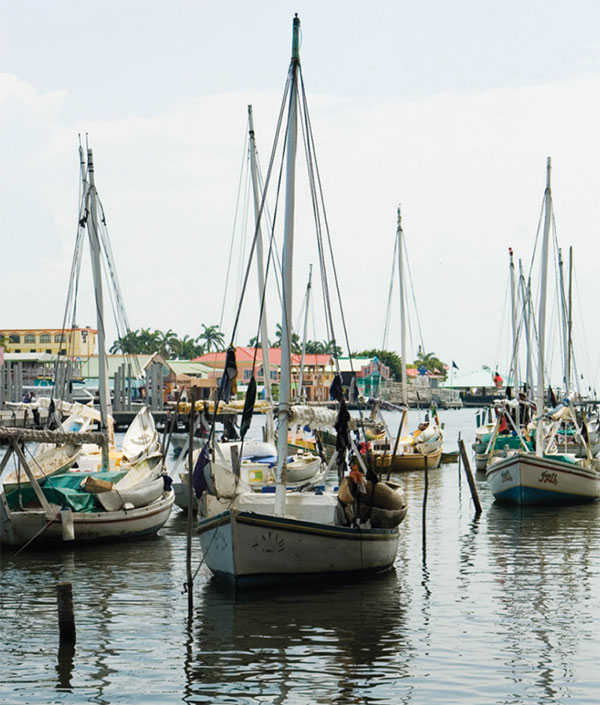
Sailing boats in the harbor, Belize City.
Corrie Wingate/Apa Publications